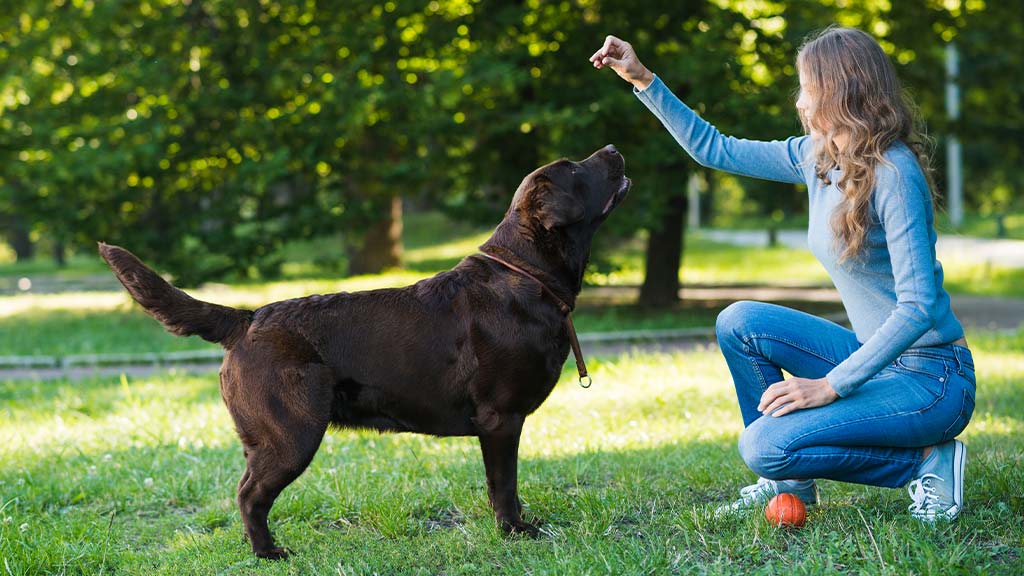Redirection dog training techniques: Because ‘no’ isn’t enough — swap the chaos for chill with smarter training!
Got a dog that won’t stop barking, chewing, or jumping? Or, is your dog going full chaos mode? Stop yelling or punishing: it won’t help. Use redirection dog training techniques to make your dog smarter and better behaved.
Dog parents often misunderstand their dog’s unwanted behavior or, in some cases, if they recognize they overlook the stimulants. Remember, dogs live in the moment. When they misbehave, they’re either bored, overstimulated, or clueless about what you want. You may need to evaluate their undesirable behavior and its stimulants to switch their focus and energy with smart distractions.
What is Redirection Dog Training & Why Does It Work?
Redirection training techniques swap unwanted behavior for good by shifting your dog’s focus toward a better option. Instead of saying “no” repeatedly, you offer a preferred alternative. This method helps dogs learn what’s acceptable while keeping training sessions stress-free. Studies show that reward-based training enhances learning and strengthens the human-dog bond.
For example, if your dog chews on your shoe, yelling won’t help. Instead, offer a chew toy and praise them when they take it. Over time, they’ll naturally choose the toy over your things. The key is consistency and rewarding good choices immediately.
When to Use Redirection Dog Training Techniques
Redirection training works best when your dog engages in unwanted behaviors because of excitement, boredom, or curiosity. The goal is to catch them in the act and guide them toward a better action before they reinforce the wrong habit.
For example, if your dog barks excessively, interrupt their focus and engage them with a different activity. If they chew on furniture, swap the object with a toy. Jumping on people can be redirected by asking them to sit and rewarding them for keeping all four paws on the ground.
Chasing moving objects is another behavior that benefits from redirection. Instead of letting your dog fixate on a squirrel or car, use a toy or treat to regain their attention. The same principle applies to nipping and rough play—if they start getting too aggressive, redirect their energy to a tug toy or structured play session.
05 Redirection Dog Training Techniques
If your dog is being extra, don’t stress. Read these redirection dog training techniques and apply them. The simple formula is “redirect, reward, repeat”. It’s all about keeping it positive.
- The “Look at Me” Trick
This technique works by teaching your dog to focus on you instead of their surroundings. Hold a treat near your face and say, “Look at me.” When your dog makes eye contact, reward them.
This method is effective in stopping barking, leash pulling, and over-excitement in distracting environments. The more you practice, the quicker your dog will respond to your voice over external distractions.
- The “Trade-Up” Strategy
Dogs love to steal socks, shoes, and household items. Instead of chasing them around the house, use a high-value treat or toy to make a trade. Offer the better item, and as soon as they drop the stolen object, reward them.
This technique prevents possessiveness and teaches them that releasing an object leads to something better.
- Move Away to Redirect
If your dog grips on something they shouldn’t—like another dog, a person, or an object—changing locations can reset their focus. Walk backward, change direction, or call their name in an upbeat tone. The moment they follow you, offer praise or a treat.
This method is especially helpful during leash training to prevent lunging or pulling.
-
Command-Based Redirection
Teaching basic commands like “sit,” “leave it,” and “watch me” creates reliable redirection cues. Practice in calm settings first, then apply them in real-world situations. If your dog tries to grab food off the counter, saying “leave it” and rewarding them for stopping reinforces self-control.
This method builds impulse control, making it easier to manage unwanted behaviors as time passes.
- Change the Environment
Establishing a structured environment helps eliminate bad habits before they start. If your dog constantly raids the trash, use a covered bin. If they dig up the yard, create a designated digging zone with sand or dirt. Reward them for using the correct spot. Avoid temptation, offer good choices, and your dog will behave better.
Common Mistakes to Avoid in Redirection Training
One of the biggest mistakes in redirection training is opting for punishment instead of guidance. Yelling or scolding doesn’t teach a dog what to do — it only creates confusion. Instead of saying “no,” provide a logical alternative and reinforce it with rewards.
Another mistake is inconsistency. If one person redirects and another ignores bad behavior, the dog gets mixed signals. Consistency from everyone in the household accelerates training. Timing is also crucial. Redirect before the behavior escalates, not after. If you wait too long, your dog may not associate the correction with their action.
Ignoring the root cause of bad behavior can also slow progress. If a dog is chewing out of boredom, simply redirecting won’t solve the problem. Providing enough exercise and mental stimulation reduces unwanted behaviors naturally.
How Long Does Redirection Training Take?
Training time varies based on the dog’s age, breed, temperament, and lifestyle. Puppies adapt quickly, while older dogs need more repetition. Some behaviors improve in days, while others take weeks. The key is patience. Celebrate small wins, and over time, redirection will become second nature for both you and your dog.
FAQs – Redirection Dog Training Techniques
- Can redirection training fix all behavior problems?
Redirection is powerful, but it’s not a cure-all. Some behaviors, like severe aggression or anxiety-driven habits, may require professional training.
- What’s the best age to start redirection training?
The earlier, the better! Puppies are sponges for learning, but older dogs can still be trained with consistency and patience.
- Does redirection training work on aggressive dogs?
For mild aggression, yes. But if your dog shows signs of serious aggression, work with a professional behaviorist for a tailored plan.
- How do I know if redirection training is working?
You’ll see your dog responding faster and repeating good behaviors on their own. Progress might be slow initially, but small wins add up.
- What should I do if my dog ignores redirection cues?
If they’re tuning you out, you might need a more valuable reward, a different technique, or fewer distractions. Training in a quiet space first can help.
Final Words!
Redirection training isn’t just about stopping bad behavior—it’s about teaching better habits. When done right, it transforms frustration into communication, helping your dog make better choices while keeping your sanity intact.
Ready to start? Grab some treats, stay patient, and watch the magic happen.

